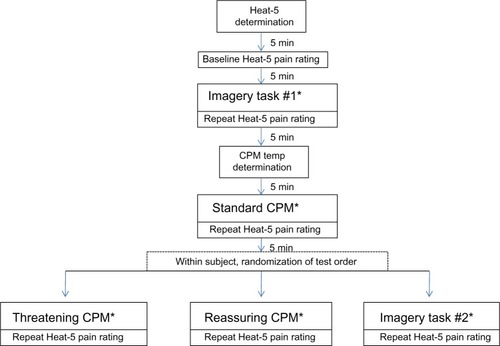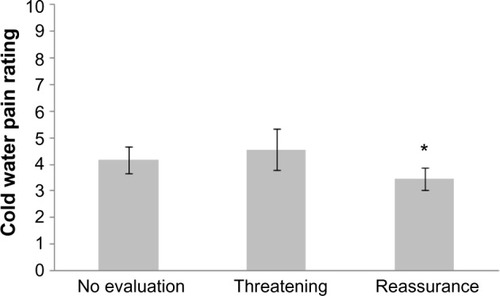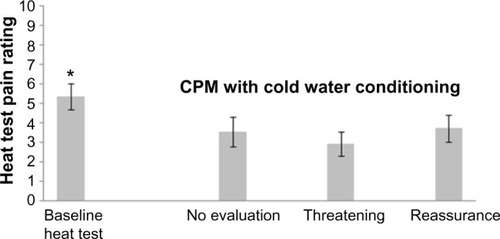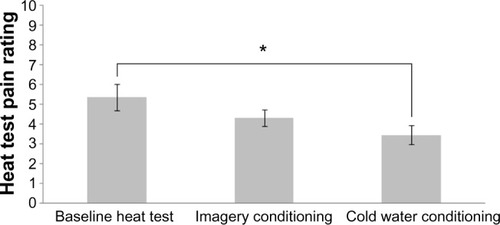Figures & data
Figure 1 Experimental outline – task flow.
Abbreviation: CPM, conditioned pain modulation; min, minutes.

Table 1 Individualized temperature settings for the test and conditioning stimuliTable Footnotea
Figure 2 Cold water pain ratings for evaluation of the cold water.a

Figure 3 Heat test pain ratings for evaluation of the cold water.a

Figure 4 Pain ratings for baseline heat test, heat test with imagery conditioning, and heat test with cold water conditioning.a

